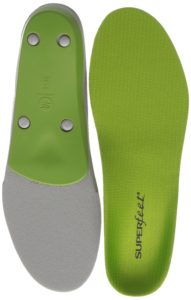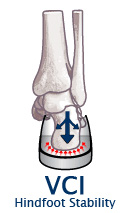Neuroma
Print-Friendly VersionComplaints
- Tenderness and pain between the metatarsal heads
- Increased pain with walking and running activities
Possible Causes
- Pronation may increase symptoms
- Shoes with tight fitting toe box and insufficient torsional support in midsole
Shoe Profile
For moderate to excessive pronators, the long axis of the shoe should provide maximum torsional control of foot rotation (pronation) and the midsole should provide proper vertical support. Proper support reduces shearing forces on the metatarsal heads that leads to pain and tenderness. Shoes should have a wide toe box to reduce compression of the metatarsals.
Orthotics
Neutral (mild pronators) – Over-the-counter orthotics with appropriately placed metatarsal support
Moderate to excessive prontators – Custom orthotics
Shoe Recommendations
The following shoes meet these criteria. Please click on the appropriate link to see the shoes and their test data.
Recommended Accessories

SuperFeet arch supports
Stabilizes the foot to reduce pronation and shearing forces in the forefoot resulting in less irritation of the neuroma.

Neuroma pads
Separates and displays the bones in the ball of the foot (metatarsal heads) to reduce pressure on the neuromas. Pads should be placed just behind the affected metatarsals.






